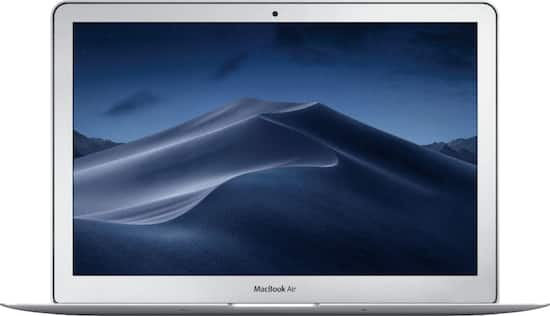Ms-6833 Drivers For Mac


Debugging a Deadlock. 6 minutes to read.
Contributors. In this article When a thread needs exclusive access to code or some other resource, it requests a lock. If it can, Windows responds by giving this lock to the thread.
At this point, nothing else in the system can access the locked code. This happens all the time and is a normal part of any well-written multithreaded application. Although a particular code segment can only have one lock on it at a time, multiple code segments can each have their own lock. A deadlock arises when two or more threads have requested locks on two or more resources, in an incompatible sequence. For instance, suppose that Thread One has acquired a lock on Resource A and then requests access to Resource B.
Meanwhile, Thread Two has acquired a lock on Resource B and then requests access to Resource A. Neither thread can proceed until the other thread's lock is relinquished, and, therefore, neither thread can proceed. User-mode deadlocks arise when multiple threads of one application have blocked each others' access to the same resources. Kernel-mode deadlocks arise when multiple threads (from the same process or from distinct processes) have blocked each others' access to the same kernel resource.
The procedure used to debug a deadlock depends on whether the deadlock occurs in user mode or in kernel mode. Debugging a User-Mode Deadlock When a deadlock occurs in user mode, use the following procedure to debug it:. Issue the extension. In user mode, you can just type!locks at the debugger prompt; the ntsdexts prefix is assumed. This extension displays all the critical sections associated with the current process, along with the ID for the owning thread and the lock count for each critical section.
If a critical section has a lock count of zero, it is not locked. Use the command to see information about the threads that own the other critical sections.
Use the command for each of these threads to determine whether they are waiting on other critical sections. Using the output of these kb commands, you can find the deadlock: two threads that are each waiting on a lock held by the other thread. In rare cases, a deadlock could be caused by more than two threads holding locks in a circular pattern, but most deadlocks involve only two threads. Here is an illustration of this procedure. You begin with the!ntdexts.locks extension: 0:006!locks CritSec ftpsvc2!gcsServiceEntryLock+0 at 6833dd68 LockCount 0 RecursionCount 1 OwningThread a7 EntryCount 0 ContentionCount 0. Locked CritSec isatq!AtqActiveContextList+a8 at 68629100 LockCount 2 RecursionCount 1 OwningThread a3 EntryCount 2 ContentionCount 2. Locked CritSec +24e750 at 24e750 LockCount 6 RecursionCount 1 OwningThread a9 EntryCount 6 ContentionCount 6.
Locked The first critical section displayed has no locks and, therefore, can be ignored. The second critical section displayed has a lock count of 2 and is, therefore, a possible cause of a deadlock.
Ms-6833 Drivers For Mac Free
The owning thread has a thread ID of 0xA3. You can find this thread by listing all threads with the command, and looking for the thread with this ID: 0:006 0 Id: 1364.1330 Suspend: 1 Teb: 7ffdf000 Unfrozen 1 Id: 1364.17e0 Suspend: 1 Teb: 7ffde000 Unfrozen 2 Id: 1364.135c Suspend: 1 Teb: 7ffdd000 Unfrozen 3 Id: 1364.1790 Suspend: 1 Teb: 7ffdc000 Unfrozen 4 Id: 1364.a3 Suspend: 1 Teb: 7ffdb000 Unfrozen 5 Id: 1364.1278 Suspend: 1 Teb: 7ffda000 Unfrozen.
6 Id: 1364.a9 Suspend: 1 Teb: 7ffd9000 Unfrozen 7 Id: 1364.111c Suspend: 1 Teb: 7ffd8000 Unfrozen 8 Id: 1364.1588 Suspend: 1 Teb: 7ffd7000 Unfrozen In this display, the first item is the debugger's internal thread number. The second item (the Id field) contains two hexadecimal numbers separated by a decimal point. The number before the decimal point is the process ID; the number after the decimal point is the thread ID. In this example, you see that thread ID 0xA3 corresponds to thread number 4.
Touch Play Music. Go back: When you open a song or artist list, touch in the top left to go back.
Set shuffle or repeat: During a song, touch the area next to the skip forward or backward icons to reveal the shuffle and repeat icons. Touch to shuffle and to repeat a song at the bottom. Touch once to repeat the current song list, or twice to repeat only the current song. Adjust volume: Press the volume keys.
Adjust Audio effects: While you are playing a song you can adjust the Audio effects on your device. Touch Menu Settings Equalizer Ensure Audio Effects are On Adjust the Speaker or Wired Stereo settings. Hide the music player: To use another app while your music plays, touch Home.

To return to the music player, flick down the status bar and touch the song title. Tip: Control music playback from the home screen by adding the Google Play Music widget. Playlists: Touch and hold a song in your library to add it to a playlist or show other options.
Ms-6833 Drivers For Mac
To play, add to queue, delete, and rename a playlist, touch and hold its name in the music library. Help: For more information, touch Apps Play Music Menu Help. Computer: To access your Google Play™ music from a computer, visit. During a flight: Press and hold the Power key, then touch Airplane mode to turn off all your network and wireless connections and listen to music during a flight.
Install the Google Play Music Manager The Google Play Music Manager is a desktop application that allows you to upload your music to the cloud and download your entire library from the cloud to your computer. Once you’ve uploaded songs to Google Play, you can listen to your music anywhere that you have internet access.